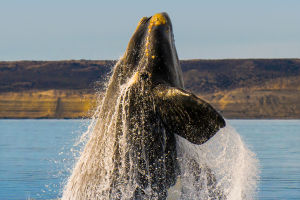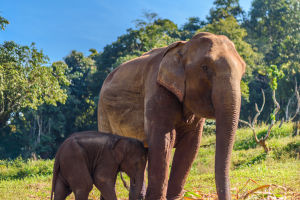We've all heard it before: "An ostrich's eyes are bigger than its brain." It sounds like a joke, right? But it's actually true—and it's one of the most fascinating things about this giant bird.
So, what does this really mean? And more importantly, why would nature design a bird this way? As it turns out, this odd detail plays a big role in how ostriches see the world, escape danger, and survive in tough environments.
Just How Big Are Their Eyes?
Let's start with some quick numbers. An ostrich's eye is about 5 centimeters (2 inches) in diameter—the largest eye of any land animal. Meanwhile, its brain is roughly the size of a walnut.
This means that each eye is actually bigger than its brain, taking up a large portion of the space inside its head. But this isn't a design flaw. It's a survival feature.
Vision Over Everything
Ostriches live in wide open spaces like African savannas and deserts, where predators can come from any direction. In this kind of environment, eyesight is far more important than problem-solving.
Their big eyes give them:
• Excellent long-distance vision—they can spot movement from up to 3 kilometers away.
• A wide field of view—almost 360 degrees, so they can detect threats from the front, sides, and even behind.
• Great focus on detail—helpful for spotting small movements in grass or distant shapes on the horizon.
In simple terms, their big eyes are like built-in binoculars. For a bird that doesn't fly and has to run from danger, this is a huge advantage.
Why a Smaller Brain Is Enough
Now let's talk about the brain. Compared to mammals, ostriches don't need a lot of mental power for daily life. They don't use tools, solve complex puzzles, or build nests in trees.
Instead, they focus on:
• Recognizing danger fast
• Remembering escape routes or landmarks
• Reacting quickly rather than thinking slowly
Their brain may be small, but it's highly specialized for what they need. It controls their powerful legs, helps them coordinate movement while running at up to 70 km/h (43 mph), and manages instincts like hiding their heads low when alarmed.
Perfectly Designed for Survival
Nature rarely makes mistakes. In the ostrich's case, its big eyes and small brain are part of a balanced survival system.
• Eyes for scanning threats from far away
• Legs for outrunning danger in seconds
• Lightweight brain that doesn't slow them down
They don't need to outsmart a predator—they just need to see it coming and escape fast. And for that, they're perfectly equipped.
How It Compares to Other Animals
Ostriches aren't the only animals with body parts that seem "out of proportion." For example:
• Owls also have huge eyes relative to their skulls.
• Sharks rely more on smell than sight, so their brains have big olfactory lobes.
• Horses have excellent side vision but limited depth perception.
In nature, the size of a body part usually reflects its importance to survival, not just intelligence or beauty.
Let's Reflect, Lykkers!
Have you ever seen an ostrich up close? Their intense gaze and fast reactions suddenly make a lot more sense, right? If you've got a fun fact or question about another animal, drop it in the comments—we love learning together!
So yes, the ostrich's brain may be small, but its super-sized eyes help it see danger before it's too late. In the wild, it's not about how big your brain is—it's about how smartly you use what you've got. 🐦👀


